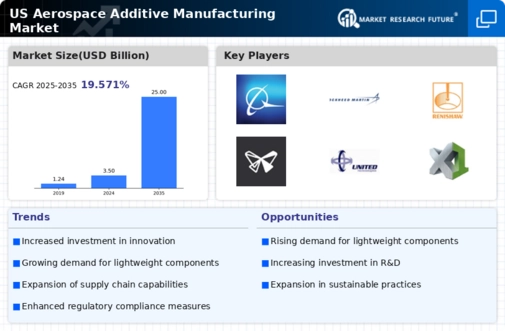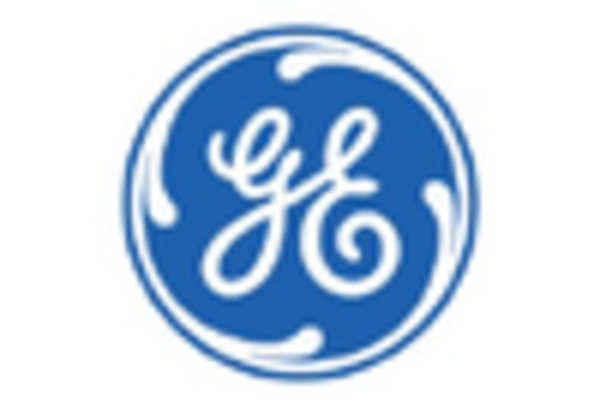Growing Demand for Customization
The aerospace additive-manufacturing market is witnessing a growing demand for customization in aircraft components. As airlines and manufacturers seek to differentiate their offerings, the ability to produce tailored parts quickly and efficiently becomes paramount. Additive manufacturing allows for the rapid prototyping and production of customized components, which can be designed to meet specific performance criteria. This trend is particularly relevant in the production of spare parts, where traditional manufacturing methods may be too slow or costly. The market for customized aerospace components is expected to grow significantly, with estimates indicating a potential increase of 20% annually. This shift towards customization is likely to drive further adoption of additive manufacturing technologies.
Cost Efficiency and Material Savings
Cost efficiency remains a pivotal driver in the aerospace additive-manufacturing market. The ability to produce lightweight components with reduced material waste translates into significant cost savings for manufacturers. For instance, additive manufacturing can reduce the weight of parts by up to 50%, which not only lowers material costs but also enhances fuel efficiency in aircraft. As fuel prices continue to fluctuate, the aerospace sector is increasingly focused on optimizing production costs. The potential for reduced operational expenses is compelling, with estimates suggesting that additive manufacturing could save the aerospace industry over $1 billion annually in material costs alone. This financial incentive is likely to propel further investment in additive manufacturing technologies.
Regulatory Support and Policy Initiatives
Regulatory support plays a crucial role in shaping the aerospace additive-manufacturing market. The U.S. government has been actively promoting the adoption of advanced manufacturing technologies through various initiatives and funding programs. For example, the National Institute of Standards and Technology (NIST) has been instrumental in developing standards and guidelines that facilitate the integration of additive manufacturing in aerospace applications. This regulatory backing not only enhances the credibility of additive manufacturing processes but also encourages investment from private sectors. As policies evolve to support innovation, the aerospace additive-manufacturing market is likely to benefit from increased funding and resources, fostering a more robust manufacturing ecosystem.
Technological Advancements in 3D Printing
The aerospace additive-manufacturing market is experiencing a surge in technological advancements, particularly in 3D printing techniques. Innovations such as selective laser melting (SLM) and electron beam melting (EBM) are enhancing the precision and efficiency of manufacturing processes. These technologies allow for the production of complex geometries that were previously unattainable, thereby reducing material waste and lead times. As a result, companies are increasingly investing in these advanced manufacturing technologies, with the market projected to reach approximately $3 billion by 2026. This growth is indicative of the aerospace industry's shift towards more sustainable and efficient production methods, which is likely to drive further adoption of additive manufacturing solutions.
Sustainability and Environmental Considerations
Sustainability is increasingly becoming a focal point in the aerospace additive-manufacturing market. The industry is under pressure to reduce its environmental footprint, and additive manufacturing presents a viable solution. By minimizing material waste and enabling the use of recycled materials, additive manufacturing aligns with the aerospace sector's sustainability goals. Furthermore, the production of lightweight components contributes to lower fuel consumption and emissions during aircraft operation. As environmental regulations become more stringent, the aerospace industry is likely to prioritize sustainable manufacturing practices. This shift not only enhances corporate responsibility but also positions companies favorably in a market that is progressively valuing sustainability.

















Leave a Comment